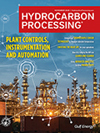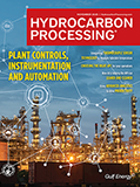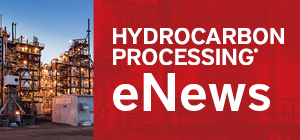
March 2025
Special Focus: Petrochemical Technologies
The advent of direct air carbon capture (DACC) systems presents a groundbreaking opportunity to capture carbon dioxide (CO2) and repurpose it as a valuable feedstock for petrochemical products like methanol and synthetic fuels.
This article highlights and compares the various technology platforms available to provide technical insight into the selection of the best LLDPE/HDPE platform for a given facility. A high-level overview of the various technology platforms is provided based on open-source available data and the authors’ years of technical and operating experience.
This article dives into the acetic acid market, as well as processing technologies for its production.
Process Optimization
This article focuses on new digital technologies that enable refiners to extract the most profit out of opportunity crudes.
The author’s company’s new sub-dewpoint sulfur recovery with interstage membrane (SSRIM) technology is a breakthrough for the sulfur recovery industry, as it is the first technology capable of achieving an overall recovery efficiency of > 99.9% without requiring a tail gas treating unit. This article discusses the basic SSRIM configuration and its advantages when compared to a traditional Claus/TGT configuration.
This article details a project that optimized sulfur treatment and methanol reduction at Pembina NGL's Redwater plant in Canada.
Catalysts
This article summarizes the authors’ JV’s recent development of two new improved catalytic materials for the residue desulfurization (RDS) process, and provides a case study showing how these materials can be used in synergy with RFCC technology to improve refinery margins.
Heat Exchange/Management
This article provides an overview of the potential impact of H2-rich fuel firing on refractory integrity and suggests safeguards to mitigate challenges. While this article discusses refractory issues in process fired heaters, the information presented can be broadly applicable to fired equipment where a flame is present.
Traditional systems rely on filmwise condensation for heat transfer; however, for large energy consumers, dropwise condensation will help improve heat transfer efficiency and reduce steam consumption and carbon footprint. This can be achieved through water treatment technologies—specifically the dropwise condensation technology—that help facilities increase productivity and reliability while reducing energy consumption.
Trends and Resources
MFG Chemical promotes Jeff Kramer to Technical Director—Water Additives
Pyrolysis has potential to process hard-to-recycle plastics and expand the scope of recycling, but scaling up pyrolysis to meet global demand remains a significant challenge. From technical optimization to creating market confidence, addressing these barriers is essential if pyrolysis is to reduce plastic pollution and advance circularity.

- NAPCOR releases 2024 PET recycling report highlighting system efficiency gains and continued strength of PET circularity 12/12
- OQ courts other partners for petrochemical complex in Oman as SABIC drops out 12/12
- Brazil's BNDES approves $71 MM for carbon storage project 12/12
- Cuba on edge as U.S. seizure of oil tanker puts supply at risk 12/12
- China oil demand to plateau between 2025 and 2030 12/12
- Germany's PCK refinery says no impact from pipeline leak 12/12




